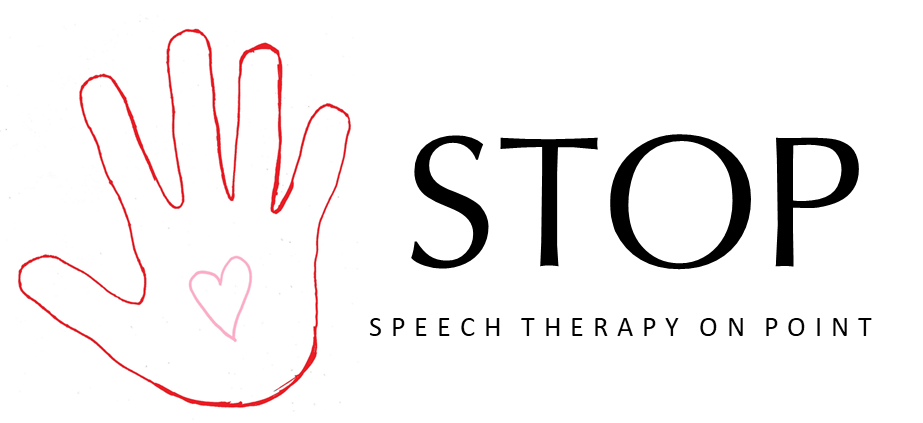Resources
-
Helpful Definitions
TOTs - Tethered oral tissues. This refers to a band of tissue (frenulum) in the mouth that is too tight, resulting in dysfunction. This is not to be confused with a typical frenulum, which is a band of tissue that is not restricted and therefore does not cause any adverse functional effects - it is a normal anatomical structure. There are seven possible tie locations in the mouth - tongue, lips (upper and lower), and buccal, or cheek (two upper and two lower).
Myo - Myofunctional therapy. This type of therapy targets strength and coordination of the orofacial structures in order to eliminate dysfunction, such as incorrect oral rest posture, noxious oral habits (thumb sucking, pacifier use, nail biting, etc.), tongue thrust, and more. Exercises target specific structures in and around the mouth that require intervention.
OMDs - Orofacial myofunctional disorders. This term refers to disorders related to the facial and oral musculature and their function. OMDs may manifest in a variety of ways, including nursing difficulties, issues with chewing and swallowing, speech delay, mouth breathing, poor dental health and alignment, suboptimal facial growth and development, and more.
Frenectomy/Frenulectomy/Frenotomy - Terms often used to refer to the procedure that cuts (frenotomy) or removes (frenectomy/frenulectomy) tethered oral tissue.
-
American Speech-Language-Hearing Association
ASHA is the national professional, scientific, and credentialing association for 228,000 members and affiliates who are audiologists; speech-language pathologists; speech, language, and hearing scientists; audiology and speech-language pathology assistants; and students. Audiologists specialize in preventing and assessing hearing and balance disorders as well as providing audiologic treatment, including hearing aids. Speech-language pathologists (SLPs) identify, assess, and treat speech, language, and swallowing disorders. Learn about the differences between professional associations and unions. Visit their website HERE.
-
What is Myofunctional Therapy & Orofacial Myofunctional Disorders?
Orofacial Myofunctional Disorders (OMDs) are disorders of the muscles and functions of the face and mouth. OMDs may affect, directly and/or indirectly, breastfeeding, facial skeletal growth and development, chewing, swallowing, speech, occlusion, temporomandibular joint movement, oral hygiene, stability of orthodontic treatment, facial esthetics, and more.
-
Apraxia
Childhood Apraxia - Childhood apraxia of speech (CAS) is a motor speech disorder that makes it difficult for children to speak. Children with the diagnosis of apraxia of speech generally have a good understanding of language and know what they want to say. However, they have difficulty learning or carrying out the complex sequenced movements that are necessary for intelligible speech.
5 Things You Can Do Today To Promote Speech & Language Development in Your Child
There are lots of little things you can do everyday to help your child develop their speech & language skills. Here are a few fun ideas you can start with right away…
Be a “Commentator”
When you are spending time with your child, describe what you are doing and why you are doing it. Even seemingly mundane tasks can use some commentary…”I’m changing your diaper, and then we’re going to get you dressed in your dinosaur t-shirt!”
To kick your commentary up a notch, you can:
Engage multiple senses by describing how things smell, taste or feel:
“Look at the beautiful red rose – I am going to smell it because roses smell sweet!” or
“This apple looks good, I bet it tastes sweet and juicy,” or
“I’m petting the cat and I like how her fur feels so soft and silky.”
Use your words to describe how you can solve a problem:
“My hands are dirty and sticky. I don’t like the way they feel, so I am going to wash them with soap.”
“Uh-oh, a page in my book ripped. I think I’ll get some tape to fix it.”
Keep the Conversation Going
Whether you are talking to an 18-month old or an 8-year-old, listen intently to your child and respond accordingly. Conversations are a back-and-forth, turn-taking exchange. If your toddler is using gestures to communicate, gesture back with your verbal response.
Mix it Up!
Introduce new vocabulary to your child in a natural way by using synonyms when responding to his comments:
“You’re right, that truck is very big — it’s gigantic! ”
“I think you are more than tired, — you’re exhausted.”
“Look at how dirty my car is — it’s filthy!”
Be a Storyteller
Create some characters with your child and make telling stories about them part of your bedtime routine. These characters can have adventures with simple conflicts and resolutions. While enjoying special story time with you, your child will also be learning about sequencing events, using words to describe actions, and a myriad of other language skills.
Have a “Sing Along!”
When you sing simple songs and nursery rhymes with your child, you are helping them learn the natural rhythms and patterns of speech. Add some gestures and body movements to this activity, and you’ll make it even more fun! Some favorites include:
The Itsy-Bitsy Spider
Wheels on the Bus
Twinkle-Twinkle Little Star
If You’re Happy and You Know It (clap your hands, stomp your feet, spin around, etc.)
